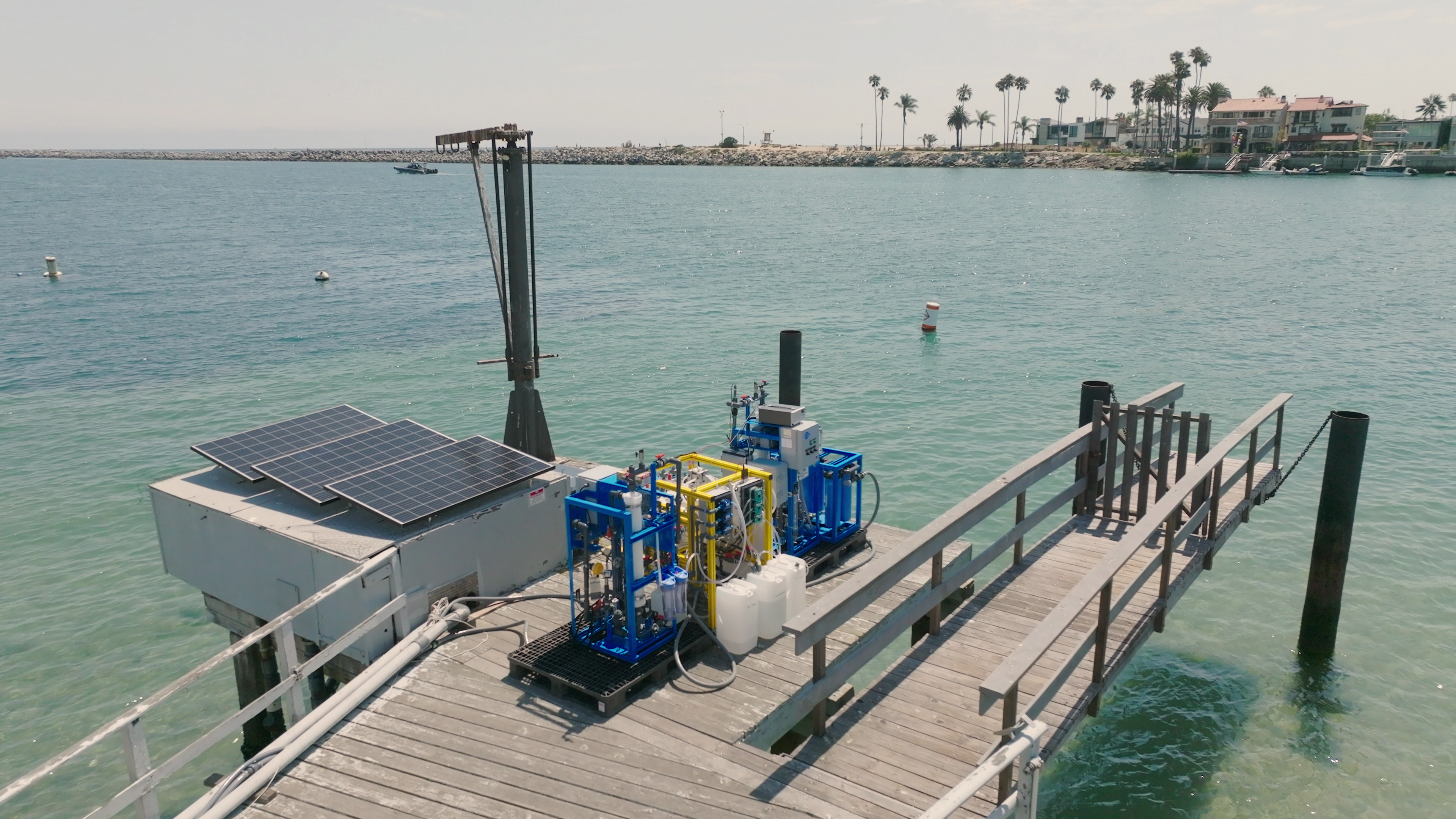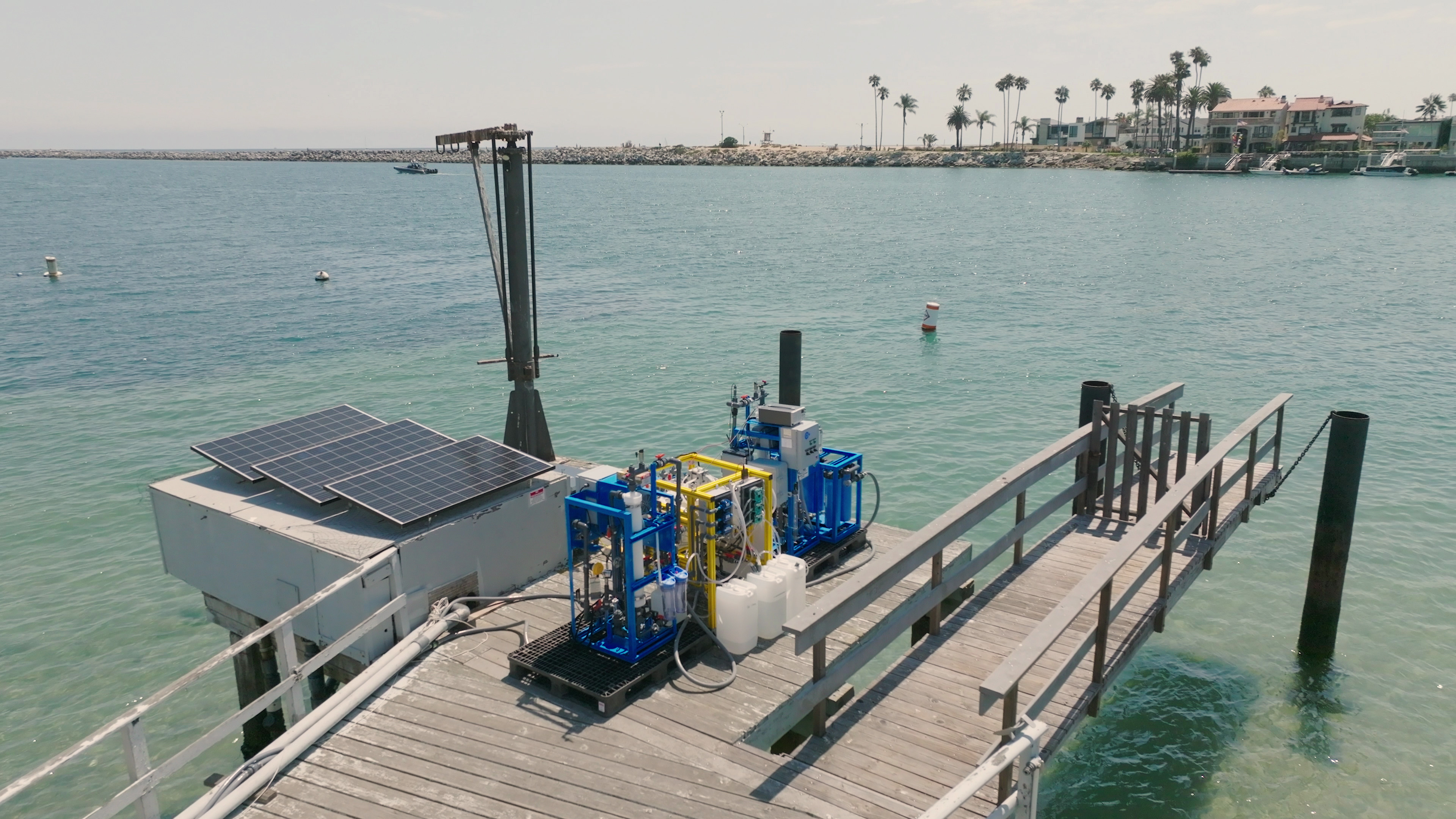
ARPA-E Investor Update Vol. 15: Captura's Direct Ocean Capture Tech
ARPA-E awardee Captura raised $12 million in Series A funding for their direct ocean capture (DOC) technology in a round led by Equinor Ventures, along with Aramco Ventures, the Caltech Seed Fund, Hitachi Ventures, Future Planet Capital, and mTerra Ventures in January 2023. Captura is using this funding to scale up their business and DOC technology that captures carbon dioxide (CO2) directly out of the ocean. Captura will use this funding to accelerate its piloting program and improve the DOC technology itself, including optimizing the CO2 permeable membranes and reducing CO2 removal costs.
On May 4, 2023, Captura also announced a partnership with AltaSea at the Port of Los Angeles. AltaSea will accommodate Captura’s new pilot facility that can capture 100 tons of CO2 from the ocean annually. At AltaSea, Captura’s team will conduct technology development and ocean modeling work that will enable the company to validate and improve the efficiency of the system and monitor how it interacts with the ocean.

Captura’s 100 ton DOC Pilot System in the Lab, Credit: Captura Corporation
Captura’s concept for marine CO2 removal spun out from work at the California Institute of Technology (CalTech) funded through ARPA-E’s “Direct Removal of Carbon Dioxide from Oceanwater” Exploratory Topic in April 2021. After founders Dr. Harry Atwater and Dr. Chengxiang (“CX”) Xiang patented their technology and Captura spun out of CalTech, they won a $1 million milestone prize in a carbon removal competition from the Musk Foundation and XPRIZE in April 2022. Captura used this funding to build their initial pilot device that has been operating at Newport Beach, California since August 2022 and captures 1 ton of CO2 per year. Captura received an additional $500,000 in ARPA-E funding through the “Seeding Entrepreneurial Energy Discoveries” Exploratory Topic in September 2022. ARPA-E SEED funding went directly towards the development of Captura’s low-cost, thin-film composite hollow-fiber membranes which are modified with highly CO2 permeable polydimethylsiloxane outer layers to selectively strip CO2 from oceanwater.

Captura’s first DOC Pilot System with 1 Ton Capacity, Credit: Captura Corporation
“The support and funding from ARPA-E has been instrumental in propelling our technology and vision forward,” said CX Xiang, Captura’s Chief Technology Officer and Co-Founder. “Those seed funds helped de-risk the technology, unlock new avenues of research, and ultimately secure our series A investment. Building on this momentum, we’re currently surging ahead through our technology piloting program, rapidly advancing towards large-scale commercial deployment."
One of the most well-known technological methods for carbon removal is direct air capture (DAC) technology, which involves capturing CO2 directly out of the air using land-based machines. As the ocean is Earth’s largest carbon sink, Captura’s clever approach to CO2 removal leverages the natural ability of the ocean to absorb atmospheric CO2, making this a highly scalable and cost-effective approach. Captura’s DOC technology takes oceanwater through its proprietary electrodialysis method to deliver a stream of pure, captured CO2 and decarbonized oceanwater. The CO2 stream can then be sequestered or used to make low-carbon products. The neutralized, decarbonized water is returned to the open ocean to do what it does best – absorb more atmospheric CO2.

Credit: Captura Corporation
Captura’s technology can take advantage of off-peak renewable energy to power the electrodialysis system, keeping operating costs low. The process creates no byproducts and adds nothing to the ocean, resulting in minimal impacts to the surrounding environment. Further, their system requires no rare earth elements or minerals, a resource constraint that affects a broad range of technologies in the energy ecosystem. Additionally, Captura’s technology can be quickly scaled and deployed anywhere in the ocean and requires low capital and operating costs, as it can take advantage of existing ocean infrastructure such as desalination plants and oil and gas rigs for deployment. By decarbonizing ocean water, it has the potential to help address ocean acidification as well.
In their final pilot phase, Captura plans to scale out their technology to capture 1000 tons or more of CO2. Captura has also signed a carbon removal pre-purchase agreement with Frontier, a collaboration between Alphabet, McKinsey, Meta, Microsoft, Shopify, and Stripe launched to offset their emissions through emerging carbon removal technologies. Captura’s agreement states they will remove 508 tons of CO2.
Captura’s technology is a tool for providing large-scale atmospheric carbon removal at a low cost.
